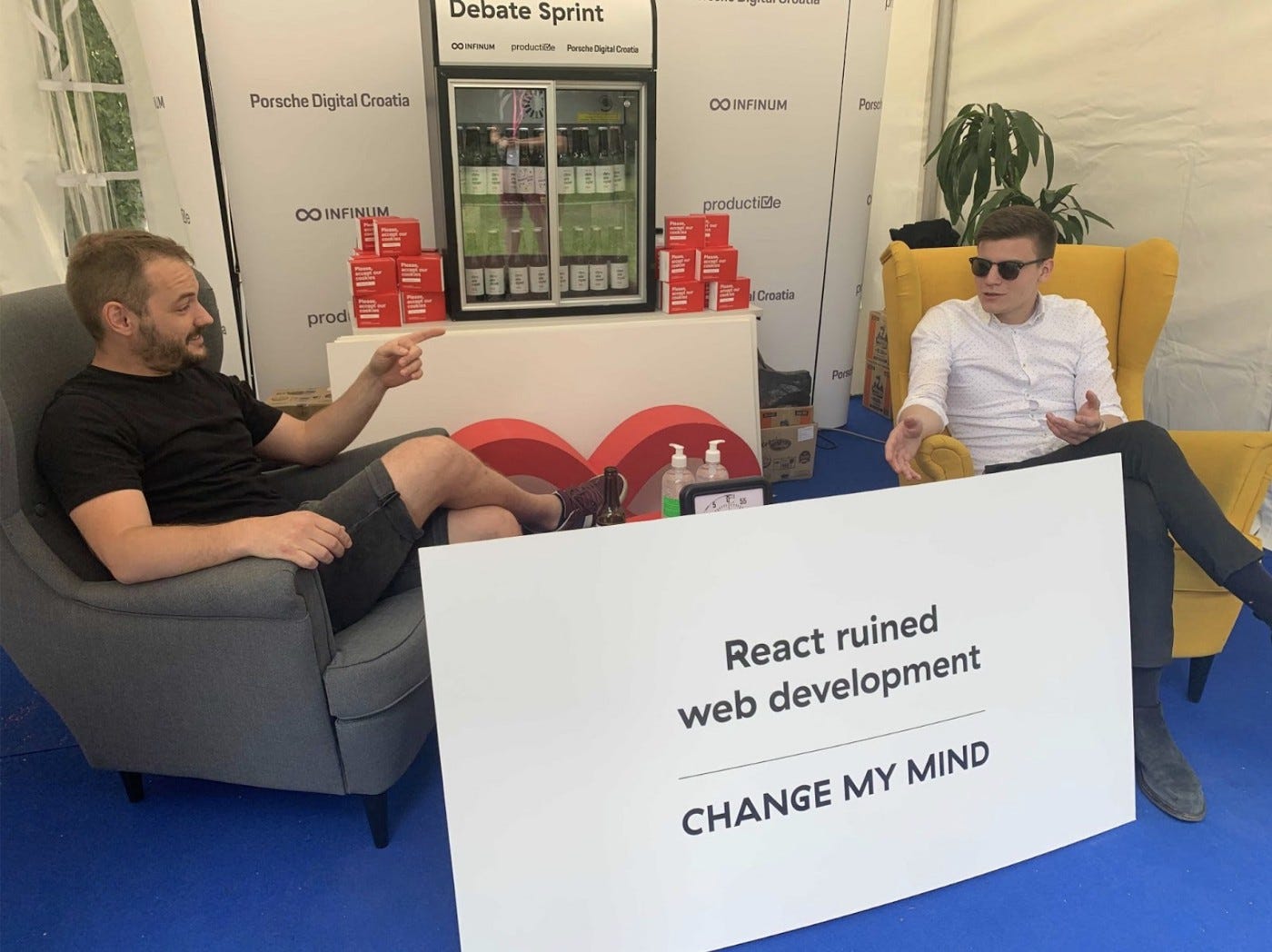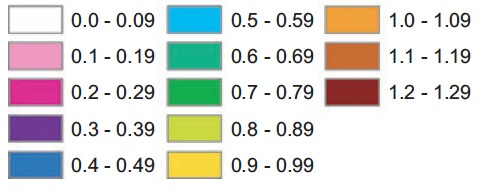LOW<-TECH, sustainability deluge, indigenous revitalization, and Pizza Heroes
I accidentally spent the entirety of today researching and writing nonstop
Biking is the gateway drug to local activism

In my humble opinion, this is a pretty fucking solid hypothesis, and yes, lending out my copy of Walkable City and talking about pickles and trying to low-key get more friends commuting on bikes safely is legitimately part of my secret gay hippie green-socialist agenda to get people personally invested in local infrastructure. Walking is chill too though.
On an exciting local note, East Bay Permanent Real Estate Cooperative buys real estate to keep tenants of color in the community and enable them to build co-ownership stakes in the property.
Indigenous revitalization
There’s an online trend these days to describe your location as “living on stolen <tribal> land” instead of the American name of your city. The first few times I saw this, I wasn’t sure exactly what the intent was since it didn’t come with any followups or calls to action attached.
However, it did get me googling “what the heck are some actionable followups to indigenous land acknowledgements”, so…hey, I guess it worked! Some Bay-Area relevant followups:
This blog post by Cafe Ohlone is an extremely actionable writeup on decolonizing your Thankgiving celebrations and your way of thinking & talking about modern indigenous people. In particular, refer to indigenous people in the present tense rather than the past tense (unless of course you are referring to historical events) — they’re still here, yo!
Intertribal Friendship House is a multi-tribal community center & indigenous social services provider in Oakland.
Consider looking up local indigenous-led community organizations near you, and seeing what calls to action they have up!
By the way, Cafe Ohlone is the world’s only Ohlone restaurant. It lost its venue during the pandemic, but has continued serving prix fixe boxed dinners out of a different kitchen, and will hopefully be reopening this winter in Berkeley!
(The Ohlone people are one of the major original indigenous groups of the Bay Area, and still live here today, but were subjected to near-extinction genocide by Western settlers, and lost federal recognition in the early 1920s.)
Indigenous languages
I started writing some impressions this morning about Potawatomi, which is the ancestral language of Robin Wall Kimmerer, the author of Braiding Sweetgrass, but it ate up my entire day and swelled into its own blog post: Learning About Grammatical Animacy.
One of the grammar bits I found most interesting about Potawatomi is that animate nouns become grammatically inanimate if you harvest them. A living cedar tree is animate, but if you chop it down, that chopped tree will be inanimate. Simply by using the grammar, you must consider the taking of life.
Some resources for indigenous language revitalization. (More linguistic resources at the end of my blog post.)
Advocates for Indigenous California Language Survival (AICLS) works to revitalize indigenous languages — an important and irreplaceable lens through which to think in indigenous cultural perspectives.
Global Oneness Project has several interviews and articles about indigenous language revitalization.
Sustainability / anticapitalism deluge
A bunch of Recursers gave awesome presentations on different topics in sustainability and I am now frothing with exciting resources to pass along!!!
Sustainable clothing
Good On You rates clothing brands on their corporate ethics and manufacturing sustainability.
ThredUP is an online thrift store.
Sashiko is a traditional Japanese approach for visible mending, e.g. mending textiles with intentionally aesthetic patterns. (I avoid r/sashiko as it can be a bit appropriative, and doesn’t often represent traditional sashiko.) People sell Artisanal Sashiko Supplies (TM) and stuff but honestly let’s remember that all mending arts were invented by non-rich people. Just look at some patterns and get started with whatever thick thread or embroidery floss you have handy.
r/visiblemending also has some good freeform examples of visible mending.

Pro-tip: If you abstractly want to reduce your consumption of synthetic clothing but are just feeling too exhausted by our impending climate doom to actually do it, you may enjoy the selfish, non-ethically-based reasons I started accidentally switching to more sustainable clothing:
Pick up firespinning as a hobby. It is extremely fun, and you cannot wear synthetic clothing while firespinning for safety reasons, as it will melt and stick to your skin in a pretty bad way.
Experience the stink-free, wicking, temperature-regulating magic of merino wool. Once you try merino wool you may never want to go back due to the huge savings in laundry effort and wardrobe volume. (As always, my recommended gateway drug is Darn Tough socks, which have a lifetime warranty that I have not had a chance to test yet because my Darn Tough socks are somehow in perfect condition after 5 yrs of abuse)
Right to Repair & avoiding engineered obsolescence
(I’ve probably already posted about this before, but you can’t really overdo it.)
Sick of throwing away your almost-perfectly-good appliances and devices that just have one little broken part that the company refuses to sell you for some reason, or has stopped sending necessary software updates for, or nailed it for an unreplaceable battery that lasts exactly one month less than the device warranty?? The earth and your wallet are also sick of it.
The Right to Repair is legislation that would force manufacturers to sell spare parts, design products to be more repairable, and to release repair manuals or other information needed. This would save consumers a lot of money, rescue countless tons of fixable appliances from landfills, and create markets for more repair jobs. Of course, capitalism would lose some profit margins.
Repair.org lobbies for the Right to Repair in U.S. states.
postmarketOS is a Linux distribution for phones.
Louis Rossman posts Right to Repair videos regularly.
Low-tech technology
You may recall Hundred Rabbits from a couple newsletters ago; they live on a sailboat while doing "experiments on resilience and self-reliance through low-tech solutions".
I just learned about LOW<-TECH MAGAZINE (Kris De Decker), which is a refreshing independent publication about truly sustainable & efficient technology that considers not just pieces of technology in isolation, but also their systemic effects!
There’s an entirely solar-powered version of the website which had an uptime of 95.26% during 2019, but 3% of the downtime can be directly attributed to a software upgrade that increased the size of the Linux kernel by a whopping 25%.
One lovely mindful thing about the solar-powered site is that it always displays a battery indicator. To avoid wasting power (and bonus: my computer power) with my extremely inevitable bingefest, I bought their ebook compilations and spent last night insatiably binging the entirety of the 2012-2018 book like the book monster I am. A few favorite articles from said binge:
How and why I stopped buying new laptops: on the author’s everyday usage of exclusively older laptops
Fruit Walls & Reinventing The Greenhouse: a fascinating two-part micro-history on the development of greenhouses, and their 17th century precursor, solar-absorbing thermal mass
In general, most of the Obsolete Technology section, which researches largely forgotten technologies that have been reinvented for modern use or may still be relevant today
How To Build A Low-Tech Internet: important lessons from internet infrastructure in developing countries
The STANGENKUNSTEN, Jerker Line Systems, and Endless Rope Drives. An absolutely delightful three-part microhistory into multi-kilometer power transmission through assemblages of linked rods and ropes, and how those might still be relevant to us today
Well-Tended Fires Outperform Cooking Stoves. Hear them out.
A lot of LOW<-TECH’s efficiency analyses center the energy inefficiencies incurred by intermediate layers of energy translation. For example, modern electric appliances running off grids incur absurd translation-layer losses:
mine the coal/fossil-fuels —> burn them —> convert that to electricity —> transfer a long way across a grid —> finally, convert it back to heat
Good food for thought about the entire lifecycle of the energy you use, not just how efficient it is after it comes out of your outlet.
True Distractions.
Has Distraction Omakase become Anticapitalism Omakase? I probably need to separate topics and spawn a new newsletter months ago but haven’t gotten around to it because I run way too many different publishing streams already. I guess I talked about some pretty distracting stuff in the previous newsletter. Here, have a chaser.
When I opened Medium to write today’s blog post on grammatical animacy, their recommended content feed was actually spot-on relevant to my niche interests for once: How React Ruined Web Development.

I want to build a modular e-ink e-typewriter soon, because I am distractible as all hell and a single-use typing device with a mega battery life would be an absolutely fantastic way to curtail that. Here’s a really cool open-source example called Ultimate Writer, although I would do a significantly smaller and more portable form factor.
(I wouldn’t buy an off-the-shelf e-typewriter because they’re fucking expensive and I would be able to plug my ergonomic keyboard into them anyway. Also, you know I’m weak for DIY.)
A nice infographic critique of rainbow color maps, followed up by some more functional alternatives.
Given the issues, why are the rainbow colormap and its variants so popular? I think the answer is quite simple: it’s attractive.
Last but not least, Balt spent days meticulously combing through thousands of indie tabletop RPGs we both got in the itch.io Bundle For Racial Justice & Equality last year (which is filled with thousands of indie video games too), and here are some of the descriptions I’m most stoked about:
The Goose of Grillner Grove: You play townsfolk attempting to warn a newcomer about the goose that's lived in the area for 20+ years. You take turns telling stories about that time when you saw the goose doing something outrageous.
Chiron’s Doom: A storytelling game inspired by gothic sci-fi and dark fantasy tales of unknowable monuments, doomed expeditions, and explorers too driven (or foolish) to know when to turn back.
Pizza Heroes: You tell the story of your Pizza Hero, destined to deliver your pizza despite hardships they run into along the way. And you tip extremely well.
Tip your Pizza Hero, y’all. Happy Saturday!






